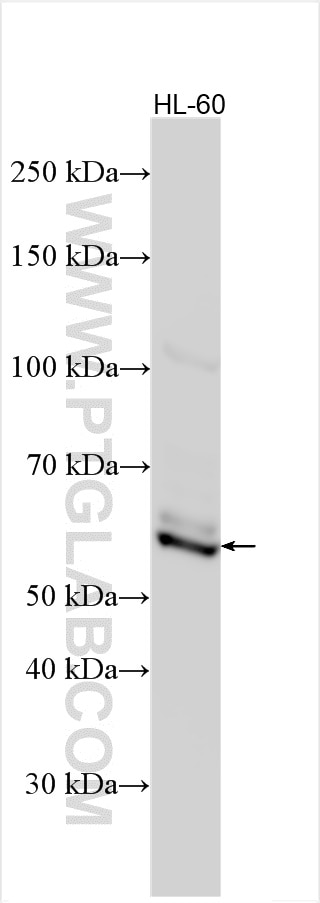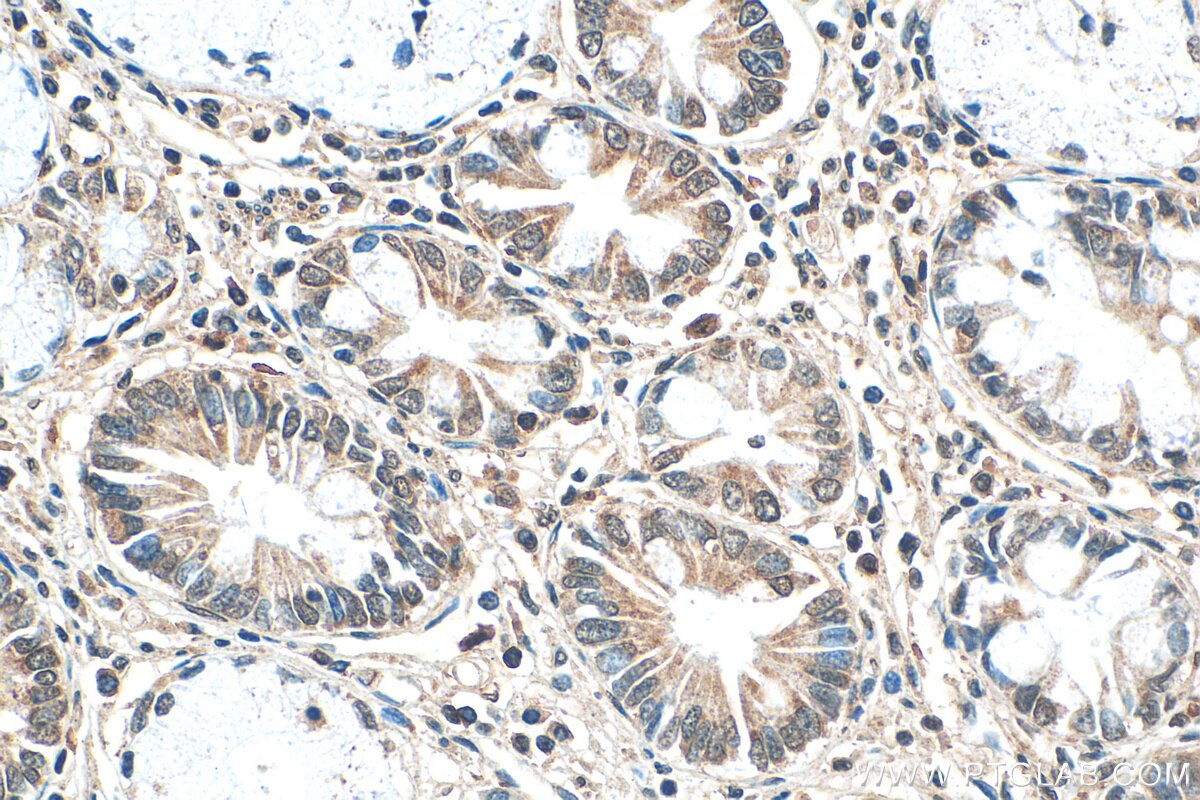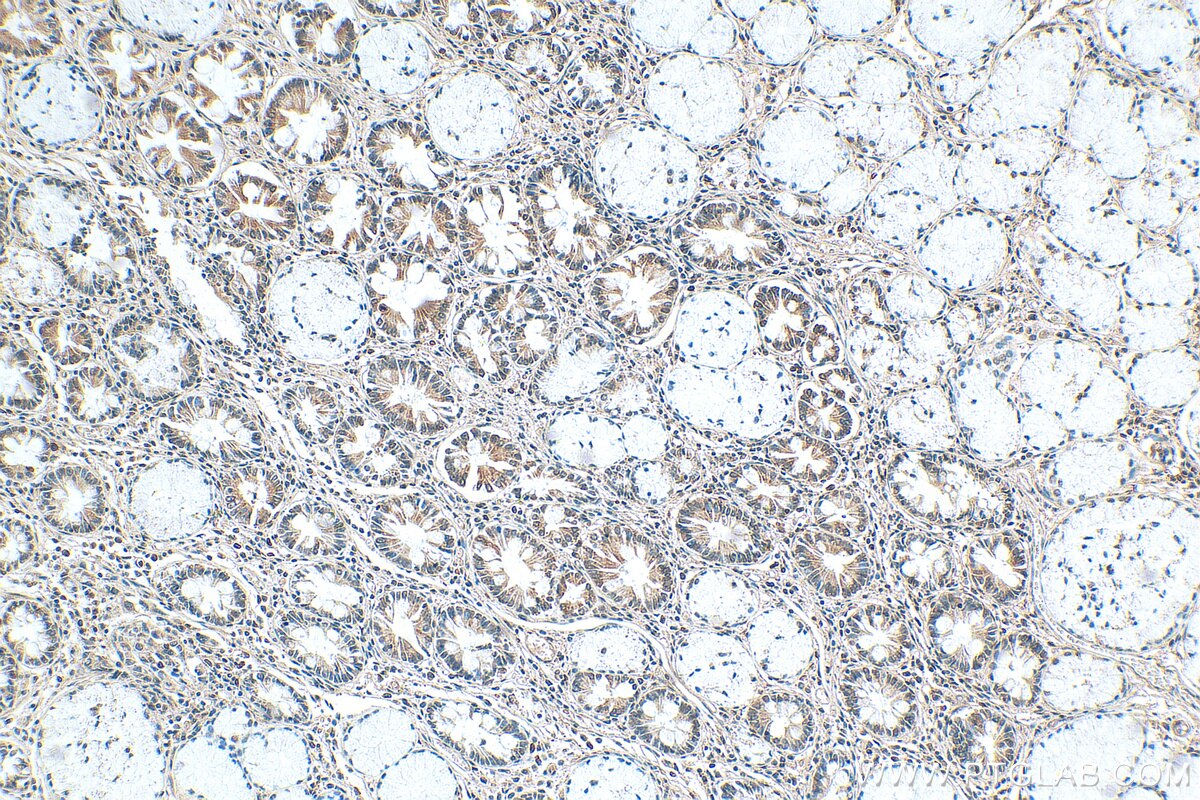Validation Data Gallery
Tested Applications
| Positive WB detected in | HL-60 cells |
| Positive IHC detected in | human stomach cancer tissue Note: suggested antigen retrieval with TE buffer pH 9.0; (*) Alternatively, antigen retrieval may be performed with citrate buffer pH 6.0 |
Recommended dilution
| Application | Dilution |
|---|---|
| Western Blot (WB) | WB : 1:500-1:2000 |
| Immunohistochemistry (IHC) | IHC : 1:50-1:500 |
| It is recommended that this reagent should be titrated in each testing system to obtain optimal results. | |
| Sample-dependent, Check data in validation data gallery. | |
Product Information
22047-1-AP targets WIPF1 in WB, IHC, ELISA applications and shows reactivity with human samples.
| Tested Reactivity | human |
| Host / Isotype | Rabbit / IgG |
| Class | Polyclonal |
| Type | Antibody |
| Immunogen |
CatNo: Ag16975 Product name: Recombinant human WIPF1 protein Source: e coli.-derived, PET28a Tag: 6*His Domain: 14-238 aa of BC110288 Sequence: TFALANTEKPTLNKTEQAGRNALLSDISKGKKLKKTVTNDRSAPILDKPKGAGAGGGGGGFGGGGGFGGGGGGGGGGSFGGGGPPGLGGLFQAGMPKLRSTANRDNDSGGSRPPLLPPGGRSTSAKPFSPPSGPGRFPVPSPGHRSGPPEPQRNRMPPPRPDVGSKPDSIPPPVPSTPRPIQSSLHNRGSPPVPGGPRQPSPGPTPPPFPGNRGTALGGGSIRQS 相同性解析による交差性が予測される生物種 |
| Full Name | WAS/WASL interacting protein family, member 1 |
| Calculated molecular weight | 403aa,40 kDa; 503aa,51 kDa |
| Observed molecular weight | 51 kDa |
| GenBank accession number | BC110288 |
| Gene Symbol | WIPF1 |
| Gene ID (NCBI) | 7456 |
| RRID | AB_3085682 |
| Conjugate | Unconjugated |
| Form | |
| Form | Liquid |
| Purification Method | Antigen affinity purification |
| UNIPROT ID | O43516 |
| Storage Buffer | PBS with 0.02% sodium azide and 50% glycerol{{ptg:BufferTemp}}7.3 |
| Storage Conditions | Store at -20°C. Stable for one year after shipment. Aliquoting is unnecessary for -20oC storage. |
Background Information
WASP interacting protein family member 1(WIPF1), also known as WIP, is a ubiquitously expressed proline-rich multidomain protein and plays a role in the reorganization of the actin cytoskeleton. Mutations in the WIPF1 binding site of the Wiskott-Aldrich syndrome protein or in WIPF1 itself cause Wiskott-Aldrich syndrome, which predisposes people to cancer, such as leukemia and lymphoma(PMID: 27863429).
Protocols
| Product Specific Protocols | |
|---|---|
| IHC protocol for WIPF1 antibody 22047-1-AP | Download protocol |
| WB protocol for WIPF1 antibody 22047-1-AP | Download protocol |
| Standard Protocols | |
|---|---|
| Click here to view our Standard Protocols |



